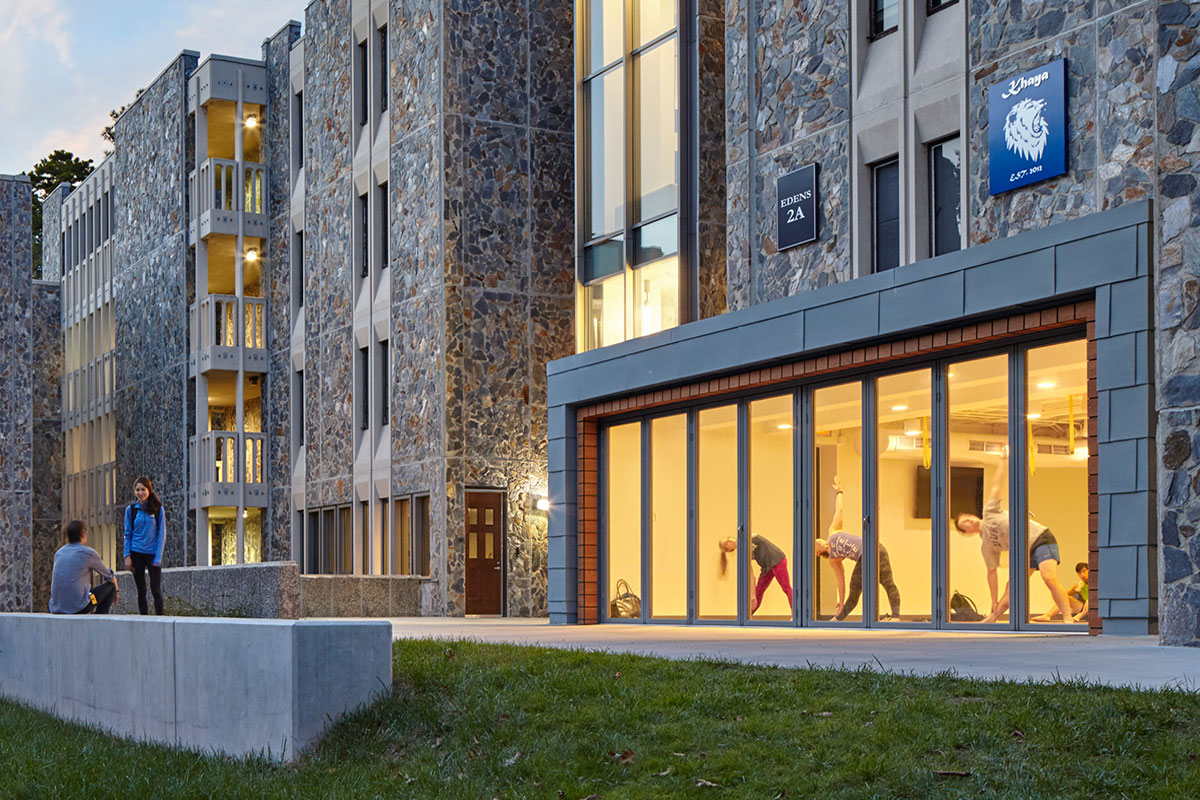How Design Can Support Student Wellness on Higher Ed Campuses
Over the last year, the pandemic has spotlighted the importance of promoting student well-being through a holistic system of environments and resources. In the following, Clark Nexsen’s Chris Brasier, FAIA, leader of the firm’s Higher Education practice, looks at how we can make wellness integral to facility design and what types of spaces offer the most benefit:
w
Students today describe high stress levels, a need to disconnect from technology, and the desire for more opportunities to connect with others. Unquestionably, wellness has emerged as an imperative consideration during the design process. It is also a broad topic, encompassing mental health, physical activity, nutrition, and the impact of the surrounding environment.
So how do we as designers ensure we’re creating spaces and experiences that reduce stress and support overall wellness for students? When I think about how designers can address those needs, I see them falling into three intersecting categories: spaces that support mental health, spaces that support physical health, and an overall design approach (such as WELL) that integrates wellness in every aspect of design and material selection.
Supporting mental health with spaces to unplug and spaces to socialize
Beyond the campus wellness centers and newer initiatives like mental health apps, designing a mix of spaces that promote belonging and quiet reflection is critical to supporting the whole student. Creating intentional spaces to unplug, read for enjoyment, and allow the mind to rest provide students with the opportunity to return to academic and social realms refreshed.
Wellness has risen to prominence on college and university campuses, becoming a distinguishing factor as prospective students look for a well-rounded, supportive higher ed experience.
As we look to restore a sense of connection and community, Ray Oldenburg’s idea of the “third place” offers valuable lessons. The third place on a college campus may be found in the classic coffee shop example – a place where students can gather and socialize free of hierarchy and academic pressure. Inspired by the traditional neighborhood porch, the emergence of “mid-door” spaces also create a zone that bridges the public and private realms and links indoors to outdoors. Convenient to the flow of foot traffic, these spaces offer exposure to nature, opportunities for socialization, and quiet reflection – all things that support mental well-being. Mid-door spaces allow us to connect and engage with biophilic elements like the natural flow of air and movement of the sun, reinforcing our sense of place. By being intentional as we design mid-door and outdoor environments to create strong connections, we can leverage the power of the outdoors to reduce stress and improve cognitive performance.
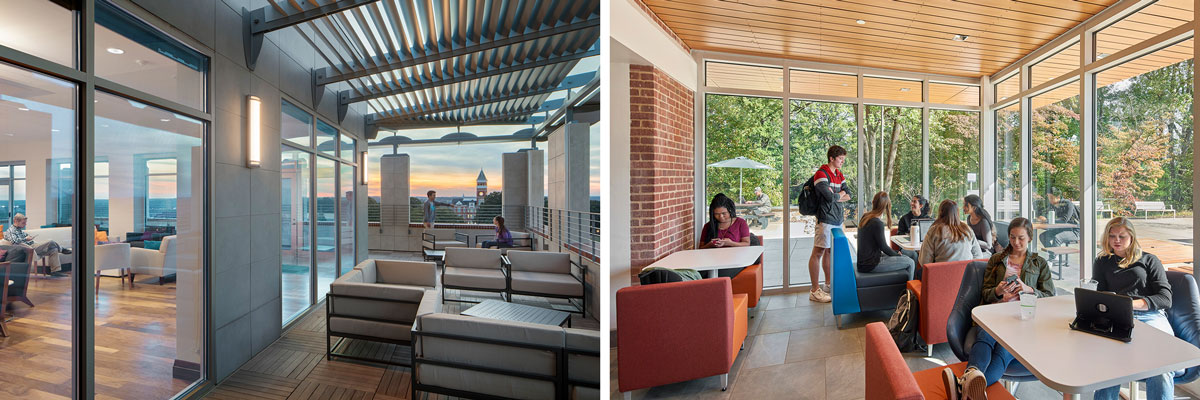
Pictured left, the rooftop terrace at Clemson’s Douthit Hills Student Community offers students an outdoor space to gather and socialize, with views to campus. Photo: Brad Feinknopf. Pictured right, The Castle is a dining and social space in the McCormick Road Houses at UVA and serves as a vibrant community hub for the first-year residential community. Adding nooks and seating along common campus paths, integrating casual dining options, and creating pedestrian streetscapes are all ways to promote a strong sense of community through designed spaces. Photo: Mark Herboth
Supporting physical health with spaces for activity and good nutrition
Physical health and mental health are inherently connected, and as schools increasingly prioritize wellness, it becomes important to weave nutritious food options and fitness spaces throughout campus. While the large campus fitness center and main dining halls are unlikely to disappear, we are often collocating convenient, healthy dining choices and exercise studios in residence halls or along main campus pathways.
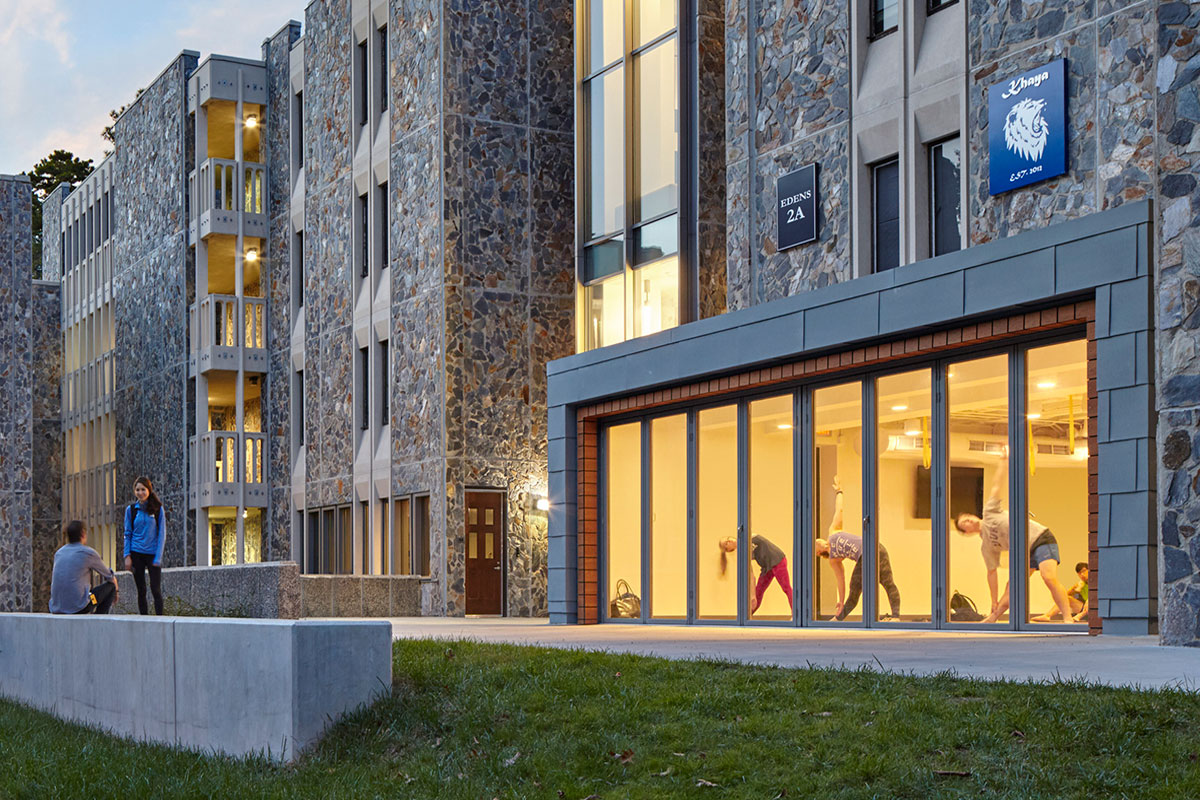
Edens Quad at Duke University features a yoga studio with the ability to open its doors to the outside – blurring the lines between inside and outside while promoting physical activity. Creating walking paths on campus, offering 24-hour fitness studios, and designing buildings that promote movement are all ways to support active lifestyles. Photo: Mark Herboth
Being more intentional in facility design includes addressing nutrition. Maker spaces are taking on new meaning, with kitchens for guided food preparation playing a role in helping students make healthier choices and cook independently. The quick, convenient dining options offered in residence life complexes are also an opportunity to feature healthy, whole foods. In general, the lines between living, learning, dining, and a healthy lifestyle continue to blur and we see demand for facilities that serve students on multiple levels.
Supporting wellness through material selection, access to daylight and views
Certifications like WELL approach the entire facility from a holistic point of view, seeking to address nourishment, movement, daylight, mindfulness, healthy and natural materials, and air and water quality. Anna Traylor, AIA, WELL AP, notes, “We spend 90% of our time inside. Air quality, water quality, daylighting, movement, healthy materials – they all matter and have a tremendous cumulative impact on our well-being. For students, these considerations only become more important as we think about ways to reduce stress and support the optimal learning environment.”
While spaces for mental health and fitness are important to well-being, treating the whole building as a wellness tool can also have significant impact. For example, promoting movement through the building is a priority in WELL design. NC State’s Fitts-Woolard Hall integrated daylight along primary circulation paths, along with opportunities for visual connection to the outdoors, which encourages movement along those paths with the added benefit of natural light.
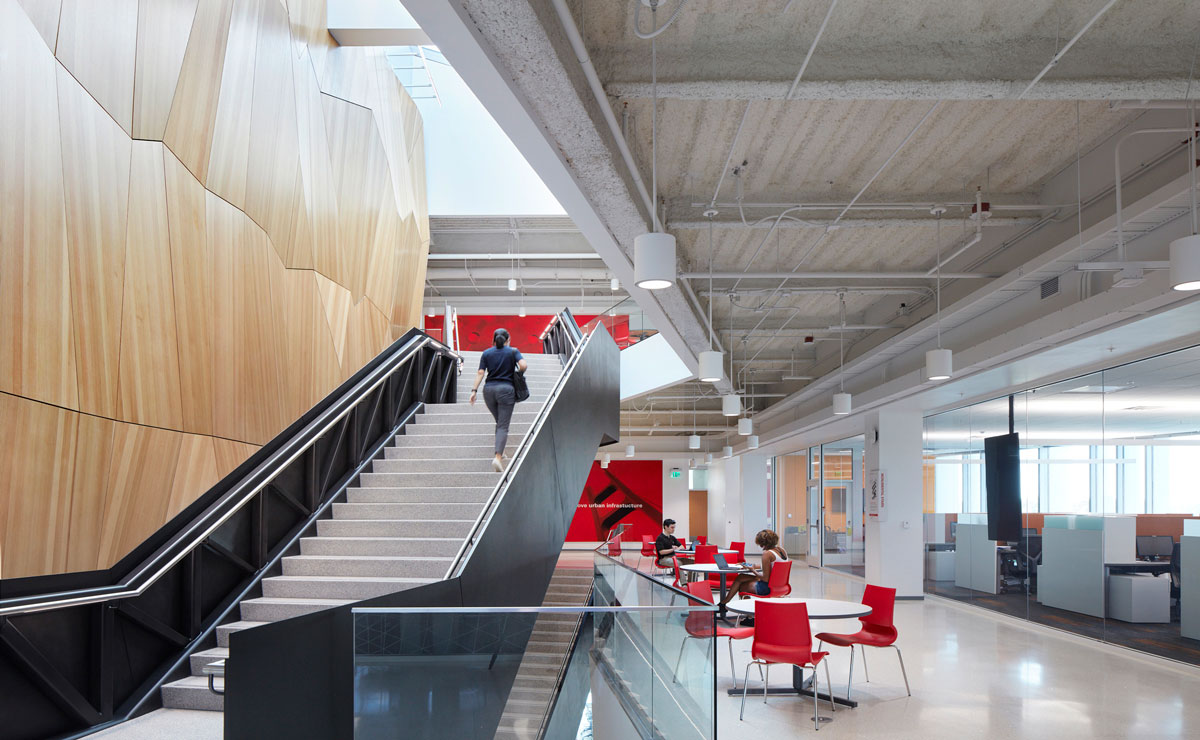
Ensuring access to natural light in a large building presents unique challenges. The 225,000 square foot Fitts-Woolard Hall features a skylight above the monumental stair, which cascades natural light down through the building core. In addition, extensive curtainwall on the exterior offers exterior views through offices, labs, and classrooms. Photo: Mark Herboth
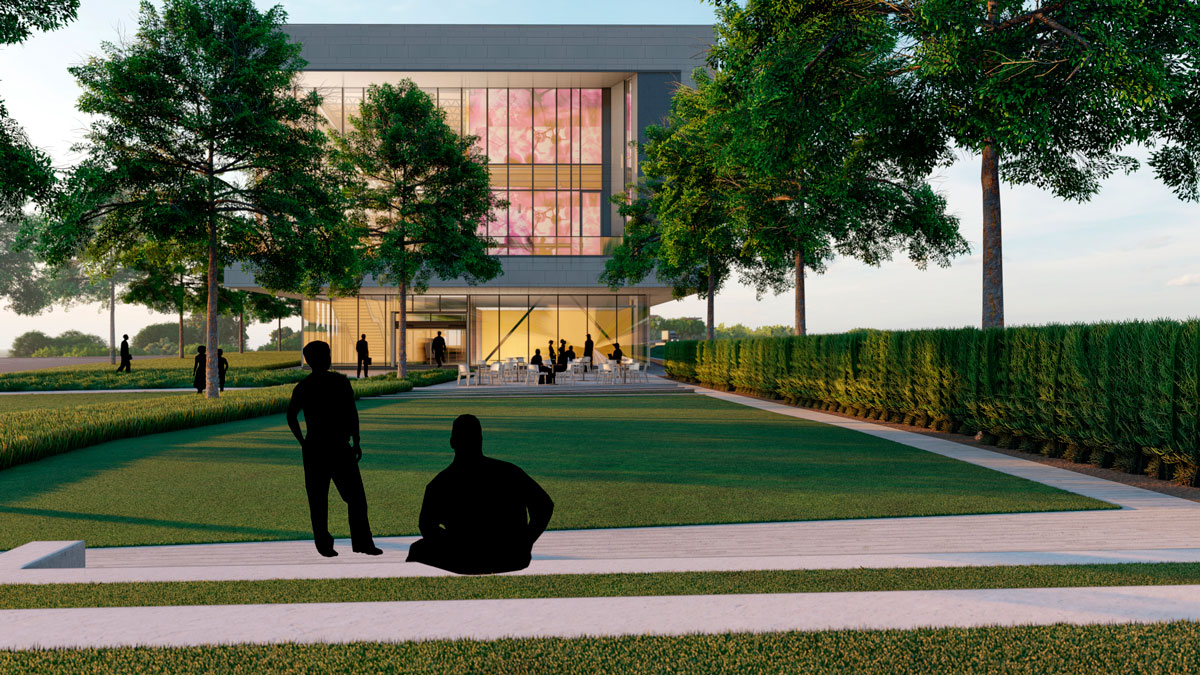
The Biotechnology Center of Excellence at Alamance Community College will integrate an outdoor plaza with casual and tiered seating. This new green space offers students a relaxing place to study or socialize. Rendering: Clark Nexsen
As we look to the future of wellness on campus, it will be critical to take an integrated approach that considers how every aspect of programming, space types, and materiality contributes to student well-being.
Chris Brasier, FAIA, is Clark Nexsen’s Higher Education practice leader and the firm’s Chief Practice & Culture Officer. To learn more about wellness on higher ed campuses or to speak with Chris, please call 919.828.1876 or email cbrasier@clarknexsen.com.
